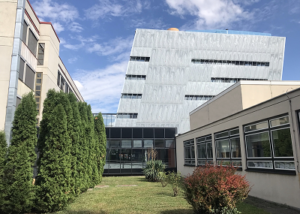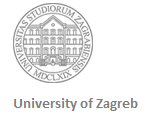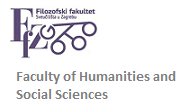Home » 7. semestar – SMJER PREVODITELJSTVO
Category Archives: 7. semestar – SMJER PREVODITELJSTVO
Translation Theory (archive 22/23)
Course title: Translation Theory Instructor: Dr. Snježana Veselica Majhut ECTS credits: 6 Status: Mandatory for translation students, elective for others Semester: 1st Enrollment requirements: Students must be enrolled in a graduate program at the University of Zagreb. Course description: The course deals with the following topics: translation theory/theories, Translation Studies; different conceptualizations of translation and […]
Translation of Scientific and Academic Texts (archive 22/23)
Course title: Translation of Scientific and Academic Texts Instructors: Dr. Ivana Bašić and Dr. Anda Bukvić ECTS credits: 5 Status: Mandatory Semester: 1st Enrollment requirements: The students must be enrolled in the graduate program in English Language and Literature, Specialization in Translation. Course description: The course consists of four blocks. In each block, the students do individual and group translations […]
Translation Theory
Course title: Translation Theory Instructor: Dr. Nataša Pavlović ECTS credits: 6 Status: Mandatory for translation students, elective for others Semester: 1st Enrollment requirements: Students must be enrolled in a graduate program at the University of Zagreb. Course description: The course deals with the following topics: translation theory/theories, Translation Studies; different conceptualizations of translation and translators; […]
Translation of Scientific and Academic Texts
Course title: Translation of Scientific and Academic Texts Instructors: Dr. Nataša Pavlović and Dr. Snježana Veselica-Majhut ECTS credits: 5 Status: Mandatory Semester: 1st Enrollment requirements: The students must be enrolled in the graduate program in English Language and Literature, Specialization in Translation. Course description: The course consists of four blocks. In each block, the students […]
Translation of Scientific and Academic Texts (archive)
Course title: Translation of Scientific and Academic Texts Instructors: Dr. Nataša Pavlović and Dr. Ivana Bašić ECTS credits: 5 Status: Mandatory Semester: 1st Enrollment requirements: The students must be enrolled in the graduate program in English Language and Literature, Specialization in Translation. Course description: The course consists of four blocks. In each block, the students […]
Translation and Intercultural Communication
Course title: Translation and Intercultural Communication Instructor: Dr. Snježana Veselica Majhut ECTS credits: 5 Language: English and Croatian Semester: 1st and 3rd term of graduate studies Status: elective Form of instruction: two lectures and one seminar per week + e-learning Assessment: continuous assessment components (50 per cent) and a term paper (50 per cent) OBJECTIVES: After finishing this […]
Translation of Scientific and Academic Texts (archive)
Course title: Translation of Scientific and Academic Texts (2018/19) Instructors: Dr. Nataša Pavlović and Dr. Snježana Veselica Majhut ECTS credits: 5 Status: Mandatory Semester: 1st Enrollment requirements: The students must be enrolled in the graduate program in English Language and Literature, Specialization in Translation. Course description: The course consists of four blocks. In each block, […]
Translation Theory (archive)
Course title: Translation Theory Instructor: Dr. Nataša Pavlović ECTS credits: 6 Status: Mandatory for translation students, elective for others Semester: 1st Enrollment requirements: Students must be enrolled in a graduate program at the University of Zagreb. Course description: The course deals with the following topics: translation theory/theories, Translation Studies; different conceptualizations of translation and translators […]
Translation of Scientific and Academic Texts (arch.)
Course title: Translation of Scientific and Academic TextsInstructors: Dr. Nataša Pavlović and Dr. Snježana Veselica MajhutECTS credits: 5Status: MandatorySemester: 7thEnrollment requirements: The students must be enrolled in the graduate program in English Language and Literature, Specialization in Translation. Course description:The course consists of four blocks. In each block the students translate specialized texts from a […]
Idiomatic and Stylistic Features of the Croatian Language
Course title: Idiomatic and Stylistic Features of the Croatian Language Course coordinator: Prof. Anita Peti-Stantić, Department of South Slavic Languages and Literatures Instructors: Prof. Anita Peti-Stantić, Dr. Ivana Bašić ECTS credits: 5 Language: Croatian Duration: 1 semester (winter) Status: mandatory Form of instruction: two contact hours of lecture and two contact hours of seminar Enrollment […]



